Trains of Thought
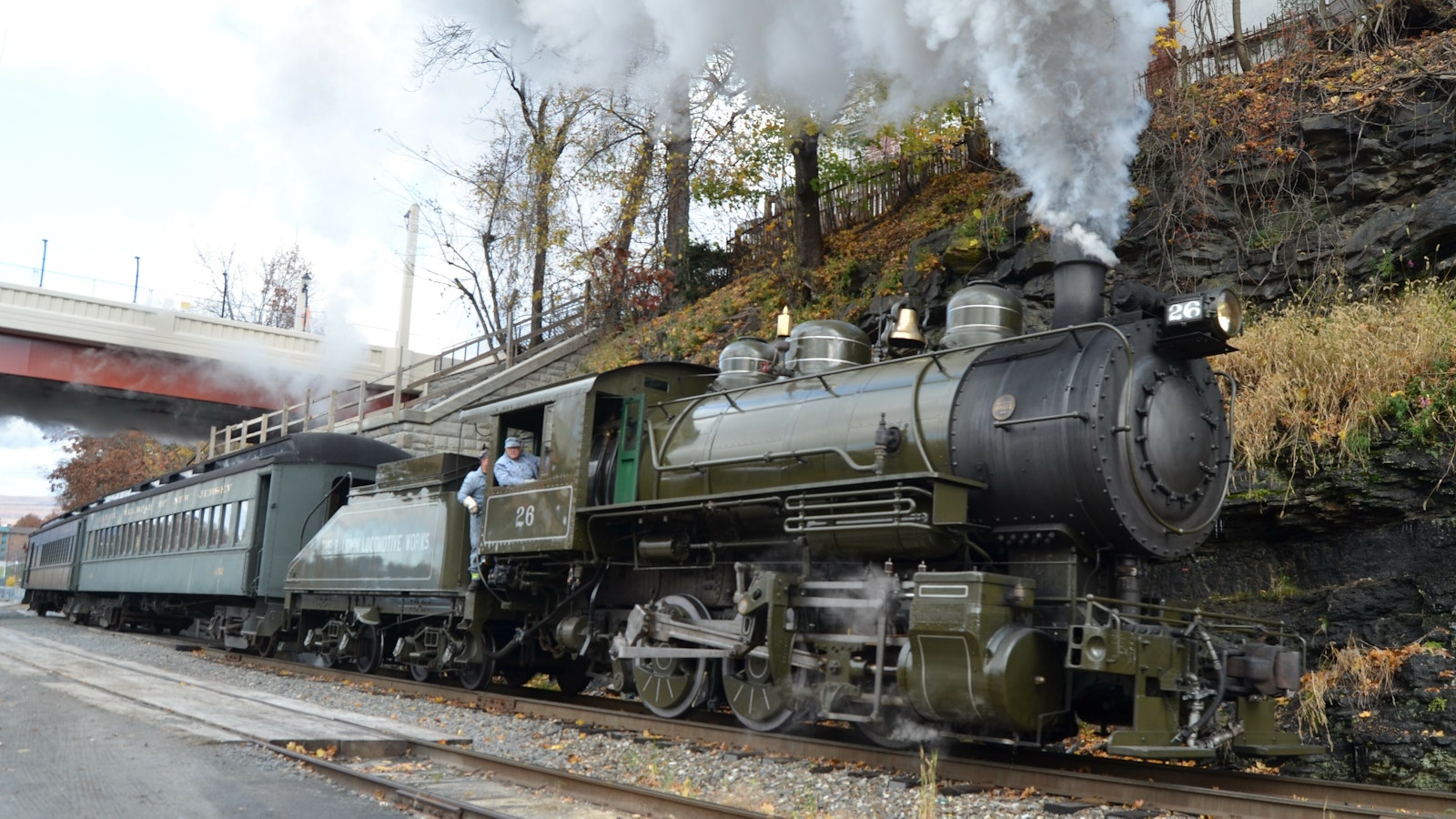
.
.
Trains and railroads are all about connections.
Connections between different parts of the country, different communities, different cultures, and different national parks.
And it turns out, many of us have our own special and personal connections with trains and railroads, too.
Whether it’s the fondly imagined sounds of “chugga chugga chugga choo choo” that bring us back to childhood or reflecting on how the history of national parks is intertwined with the history of trains, railroads have impacted all of us in some way, whether we realize it or not.
For National Park Service Ranger Flor Blum and Union Pacific Collection Curator Patricia LaBounty, trains and railroads are always on their minds.
Flor loves welcoming train lovers from all walks of life to Steamtown National Historic Site, where she gives tours of the locomotive shop and takes people on trains. Fun fact about Flor, she gives tours in English, Spanish and French!
Patricia is your go-to for answers as she cares for 500,000 photos, documents and objects in the Union Pacific Collections in the City of Council Bluffs, Iowa.
We were fortunate to have the opportunity to chat with Flor and Patricia, two passionate train and railroad enthusiasts, and we’re excited to share their stories with you.
We hope you’ll enjoy this glimpse into our conversation.
How does your job connect to railroads and trains? What about your job do you love most?
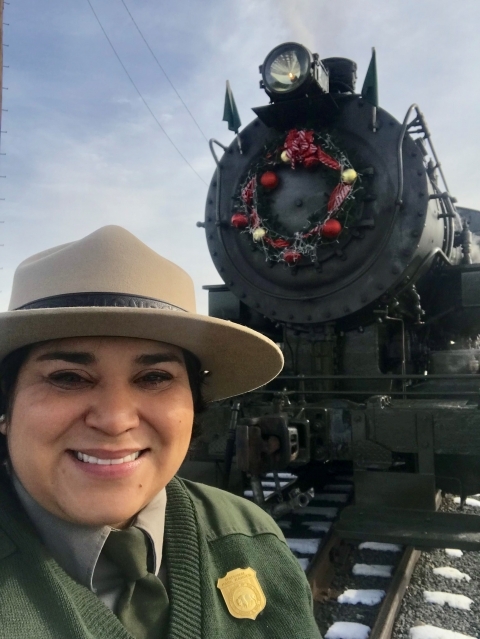
Flor Blum: Steamtown National Historic Site tells the story of railroading and how our lives changed thanks to this industry. Steamtown was originally a private collection that belonged to a man named F. Nelson Blount. As a boy, Blount loved watching the trains go by. He grew up and he still loved trains and had the means to do something about it. As steam engines were being phased out, Blount was buying them up. He created a foundation called Steamtown USA which was first located in North Walpole, NH and then Bellows Falls, VT. After a couple decades, the foundation couldn’t keep up with the collection, chose to bring it down to Scranton, PA and eventually the collection was transferred to the NPS. I love being able to honor the man who started it all. I’m a historian and whenever I can, I like to pay homage to the origins of things. If it weren’t for him, this site would not exist and I wouldn’t be here.
Patricia LaBounty: My job is all about railroads and trains as we explore railroad history every day at the museum! I assist historians, cultural institutions and others to find the answers they are looking for. Not to mention help the more than 30,000 annual museum visitors understand the role that America’s first transcontinental railroad played in the development of the United States.
What is your first memory of railroads and trains?
Flor Blum: My first memory of trains was riding the BART (Bay Area Rapid Transit) in San Francisco. I was about nine years old and my family was visiting my uncle. I remember that we took it from one end to the other just so my brother and I could look out the window. Trains didn’t really take a strong place in my life until I moved to New York City, where trains took me to work, to museums, everywhere!
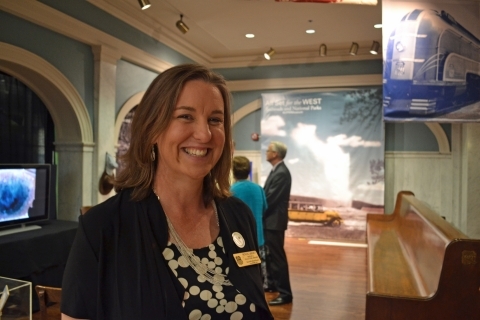
Patricia LaBounty: Growing up in Colorado, one of my first memories about trains was getting to ride the narrow gauge train from Durango to Silverton. This tourist railroad was once a proud part of the Denver & Rio Grande Western Railroad, moving mining products out of the mountains. The railroad was narrow gauge, meaning the space between the rails was smaller than typical track spacing, to negotiate the steep mountain passes through the Rockies. This train ride was taken in open gondola cars where my white socks rapidly became black from the cinders that were flying off the smokestack of the little steam locomotive. It was a spectacular way to experience my home state!
Why do you think it’s important for people to connect with the history of railroads and trains? What about railroad/train history (past and/or present) do you find most interesting?
Flor Blum: Our lives changed thanks to the railroads. Not only were we able to transport people around, but bring fresh groceries from the country to the cities. During the Civil War, railroads played a huge role from transporting soldiers, supplies, and the wounded. Every major battle east of the Mississippi River was within 20 miles of a rail line. Even the simple task of mailing a letter changed. Instead of taking a couple weeks by horse, it was now a couple days and it was more affordable. Prior to the railroads, it cost anywhere from six to 25 cents (approx. $2-$8.40 nowadays) to send a letter. Once we had railroads, the price dropped to a penny and anyone could write a letter, not just the wealthy anymore. What is also so interesting to me is how trains intersect and get you places.
Patricia LaBounty: I think it’s important for people to connect with railroad history because it provides a unique window into American history. After 1869, railroads became a part of every person’s life in the U.S., and railroads were witness to every major event and transformation in our country from that moment onward. From natural disasters, to periods of war, railroads were there and they supported the nation in various ways.
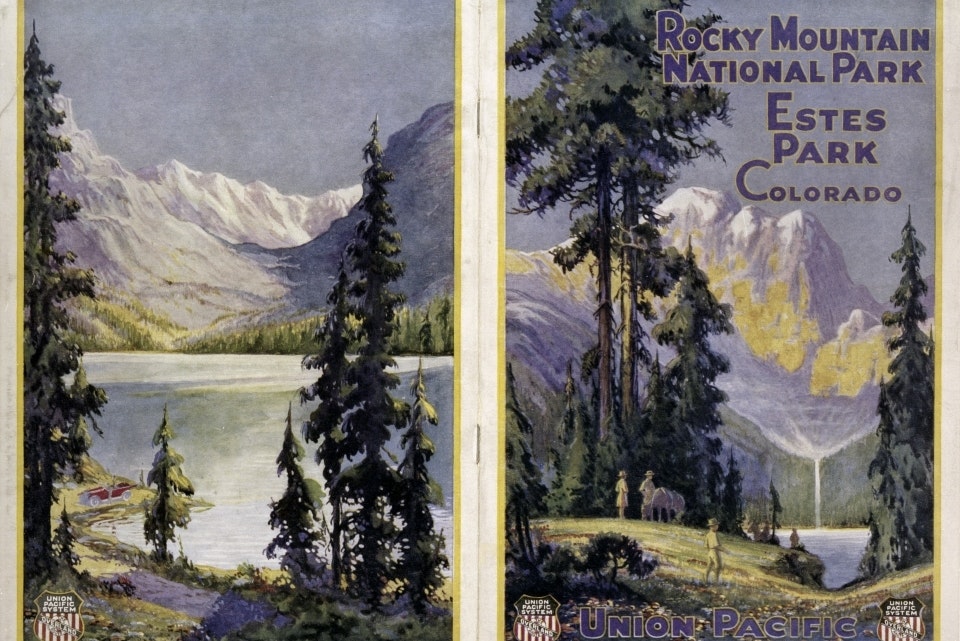
What I find most interesting is the transformative nature of railroads; something that can be both beneficial and detrimental depending to which community you belong. For settlers, the railroad was a lifeline, bringing supplies and providing increased communication and connection to the rest of the country. For Native Americans living in the path of the construction, the railroad represented the end of a way of life. For 19th century immigrants to the U.S., the railroads provided much needed employment and mobility offering a standard of living better than they could expect in crowded urban centers. Later, the railroads provided increased connection for Tribal nations living on reservations and were eventually a source of employment for these isolated communities. It’s this power of transformation that I think makes studying railroad history so important and fascinating. There is so much to learn and share. I am constantly surprised and intrigued!
Why is the story of the transcontinental railroad significant to you?
Flor Blum: Considering I am originally from California, the transcontinental railroad is very significant to me. If the east and west tracks never joined (or didn’t join as soon as it did), there wouldn’t have been as much progress. For people from the East Coast who always dreamed of seeing the Pacific Ocean or the beautiful scenery of Yosemite, it suddenly became a reality. If the transcontinental railroad had been done twenty years earlier, maybe it would have accelerated the Gold Rush and California's entry into the Union. Maybe California would have had a bigger role during the Civil War, we will never know. And it's really neat that even now, more than 150 years after the completion of the transcontinental railroad, you could still take a cross-country trip by rail.
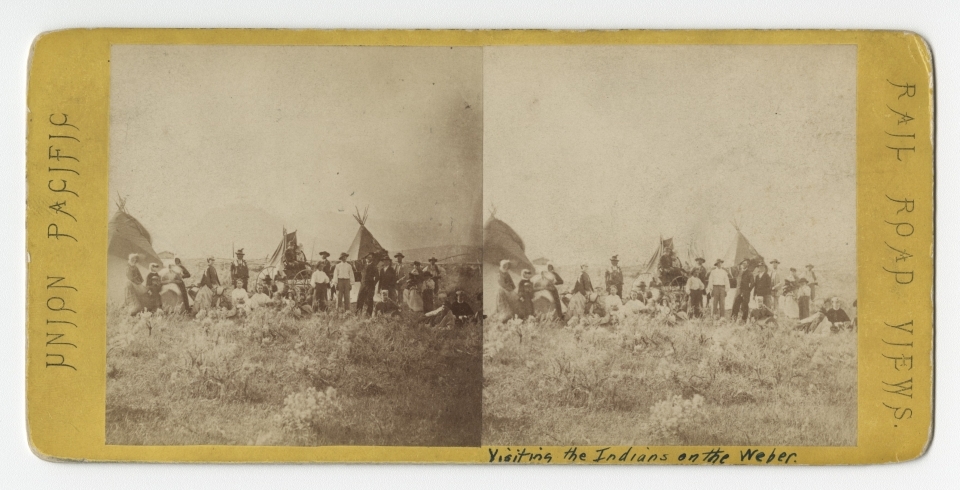
Patricia LaBounty: It is truly a moment in which so much could have been different, if the railroad had not been completed! You could call it a “choose your own adventure” moment in American history. The transcontinental railroad’s completion effected daily life; travel between coasts was just 7-10 days instead of 6-8 months by wagon, the way Americans ate changed with food becoming available from coast to coast. Suddenly, communication by mail was rapid and reliable. Life for Native American tribes became much more difficult after the completion of the railroad which brought thousands of settlers into the Great Plains and California, and hastened the government removal policies and the establishment of reservations. Railroads provide increased access, and this was true as well for the bison hunters entering the plains. By 1900, those once plentiful herds had dwindled to just over a thousand animals. The access provided also allowed hundreds of communities to be established along the line creating the towns and cities we know today!
Why are you personally excited about Junior Ranger Railroad Explorer? What do you hope people will gain from Junior Ranger Railroad Explorer?
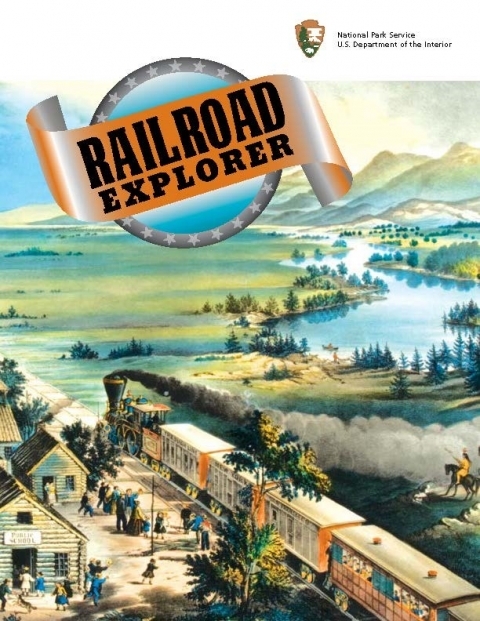
Flor Blum: A new Junior Ranger booklet is always exciting and I just can’t wait to hear what kids think about it! Junior Ranger programs are an amazing way for kids and adults alike to learn through national parks. This Railroad Explorer book encompasses the hard work that went into not only building railroads, but also joining the East and West. I also really appreciate that this book talks about the ramifications of building the railroads, including the culling of bison and the destruction of Native Americans’ tribal lands.
I hope that first and foremost, they have fun! I hope that they realize how our lives were improved thanks to the railroads. There are so many things to learn from this booklet; the tools that were used, the people who worked on the tracks, what type of food comes from different places, and how a steam engine works. I even learned a couple things after going through the book! It is the perfect combination of history, science, technology, critical thinking, safety, and fun.
Patricia LaBounty: Junior Ranger Railroad Explorer will connect people to railroad history in a profound and immediate way. The program allows kids and adults to see the connections between immigration, government Indian policy, and settlement of the interior of the U.S.
I hope that the activities light a spark of curiosity! Hopefully, kids and adults will want to know more after completing the booklet. I also hope that they take away the idea that history and people are complicated, and that much depends on your perspective and where you are standing during the events.
Why it is so critical for partners to work together to connect kids, adults, and families to educational opportunities and activities through parks (as it relates to railroads, trains, and beyond)?
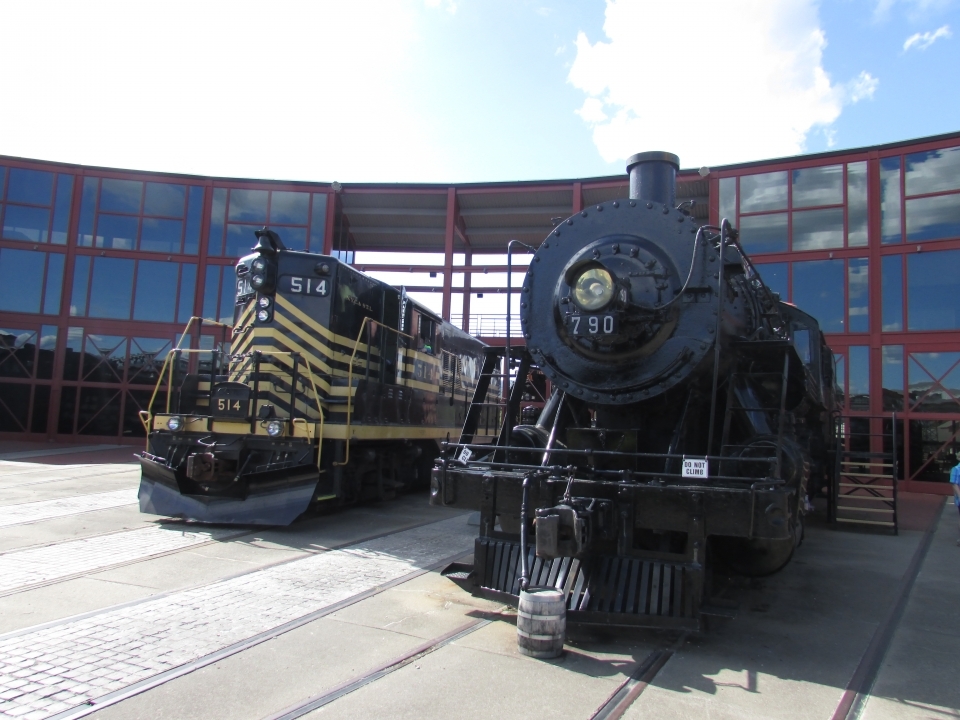
Flor Blum: By working together, we are putting the best we have out there, the best quality work and knowledge. We are all good at something, and putting the pieces together has created some great projects and programs.
Patricia LaBounty: These types of educational programs are critical because they provide a sense of depth and context to what people are seeing and experiencing. Our national parks are more than just beautiful landscapes, they are vibrant areas with rich cultural, biological and historical stories to tell that connect people - in a human way - to these places. These programs are an entry point to experience that powerful context.
What is your favorite railroad/trains-related story to share with people?
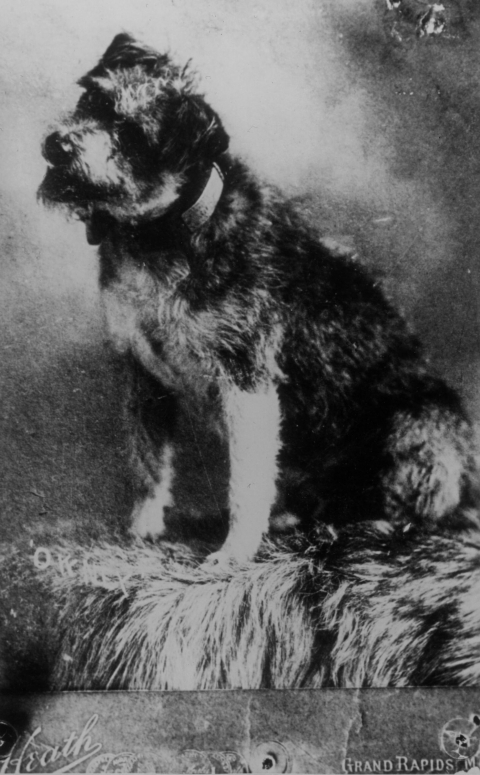
Flor Blum: My favorite story to tell is about a stray dog named Owney in Albany, New York, that became the first unofficial postal mascot. He travelled all around the United States and around the world. In his ten years of life, Owney travelled 140,000 miles, how many people can say that?! Owney was a very good postal employee, he would stay with the mail. If it was misplaced, the postal clerks would eventually find it when they were looking for Owney because he’d be next to it.
As Owney travelled everywhere, he would be given dog tags as a token of his trip. Owney’s collar became so heavy with all the tags that he was made a vest. It’s rumored that Owney had over a thousand dog tags, and the National Postal Museum in Washington, D.C., can actually account for 372 of them! Owney eventually became the official mascot of the Railway Mail Service. I think it’s amazing how a dog had so many adventures and was a true help to the Albany post office. And, you can see him in person. After his death, he was preserved and is displayed at the National Postal Museum.
Patricia LaBounty: This is a hard question because there are so many great stories to tell! I think that by far my favorite story to tell about the railroad is that of Kate Shelley. Kate, as a 15-year-old girl in 1881, heard a train go off the bridge and into the river near her home in central Iowa in the middle of a dark, stormy summer night. Her father had been a railroad switchman, and she knew what this might mean for other oncoming trains.
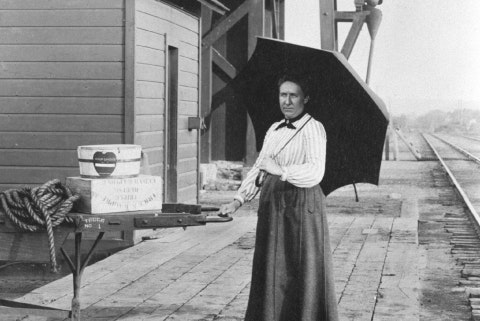
She raced through the heavy rain, carrying a lantern across what remained of the bridge, and finally made it to the nearby station in time for the station agent there to warn an oncoming passenger train to stop. Her heroic efforts prevented a disaster where many lives would have been lost. Kate’s story caught the imagination of the country, and she eventually became the station agent at that Iowa depot - a position she held until her death in 1912. Later, the bridge constructed nearby would bear her name, the Kate Shelley Bridge, in honor of her actions that night in 1881. Women have been a part of railroad history from its beginning, and it’s so exciting to learn about their many contributions!
There are so many stories about trains, and there are so many ways to learn more about them through national parks. A great place for railroad enthusiasts to #FindYourPark/#EncuentraTuParque is here on the National Park Service website.
Flor Blum is a park ranger at Steamtown National Historic Site (STEA). STEA was established to preserve, interpret, and protect the history of steam railroading in America including the historic Delaware, Lackawanna and Western Railroad yard, collections, technical knowledge, and skills that further public understanding of the impact of steam railroading on U.S. industry, commerce, and society. Flor started out as an intern for Museums at Ellis Island National Museum of Immigration. That internship led to a seasonal and term position at Statue of Liberty National Monument. In 2018, she got her first permanent job at STEA. Flor has a BA in History and two MAs in European History and Public History. All degrees were earned at St. John's University in Queens, New York.
Patricia LaBounty is the Curator of the Union Pacific Collection and Manager of the Union Pacific Railroad Museum. An employee of Union Pacific, Patricia manages one of the oldest corporate collections and museums in America. Union Pacific’s collection, displayed at the Museum, draws visitors from all 50 states and more than 40 countries from around the world. She began working for the Union Pacific Railroad Museum in 2006. Patricia holds a BA in Anthropology from Whitman College and an MA in Museum Studies from the University of Oklahoma.